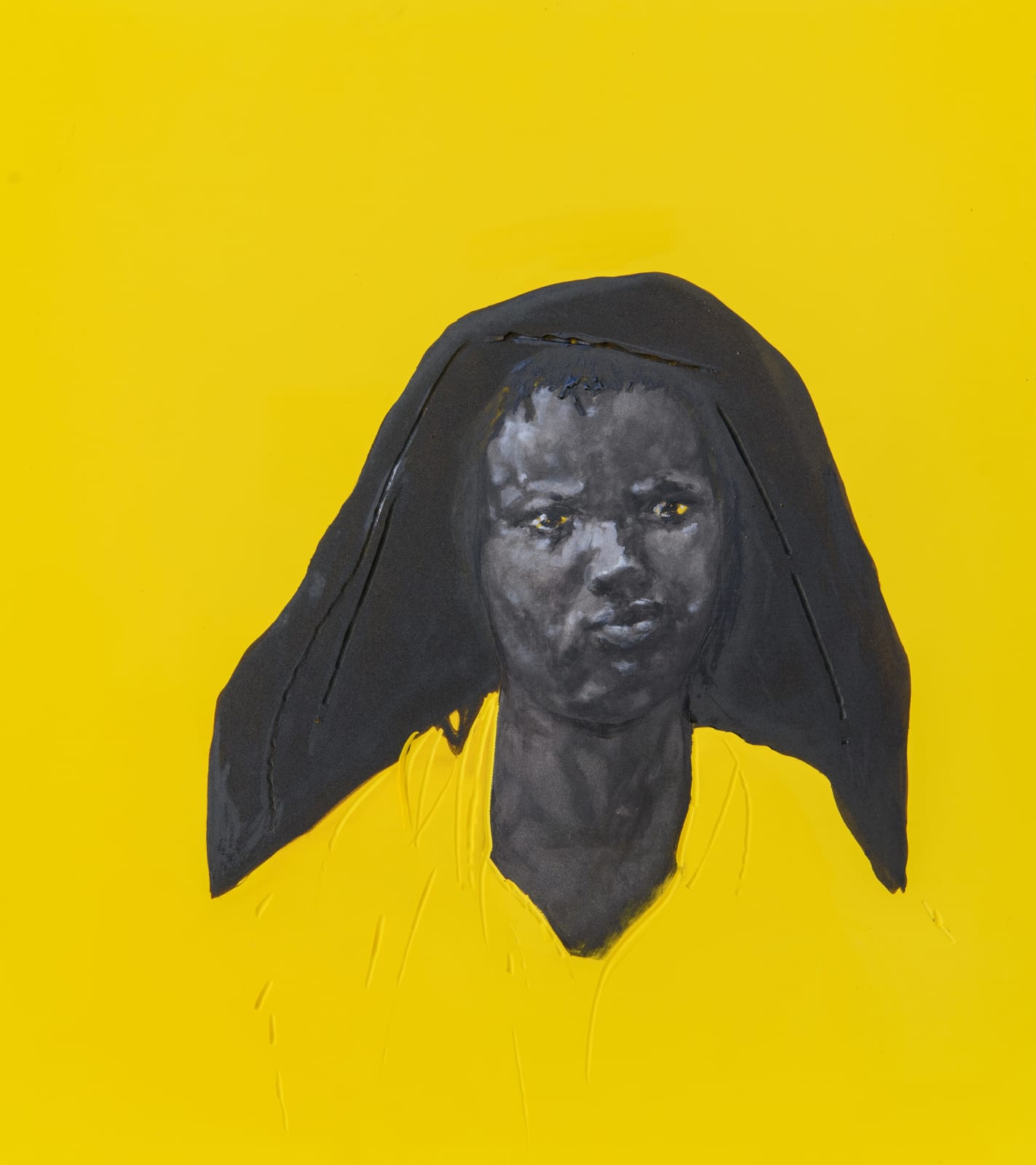
M’barek Bouhchichi Moroccan , b. 1975
Nous pouvons être n’importe qui
Nous pouvons figurer dans une image, une peinture
Dans un espace intérieur, pour explorer le déchirement, le silence Une existence ...
Négocier une coexistence, une visibilité sur cette terre
______
We may be anyone,
We may appear in an image, a painting,
In an inner space, to explore the rift, the silence,
An existence...
To negotiate a coexistence, a visibility on this earth
M’barek Bouhchichi
M’barek Bouhchichi’s series of portraits centers on the presence of the black body and its historical absence from representation. “What does it mean to be a black Moroccan?” serves as the initial line of his thematic and conceptual inquiry, probing the implications of such forms of invisibility and erasure on individual and collective consciousness. Situated on a geographic and historical margin, Bouhchichi aims to disturb this geography and to subvert an authoritarian Western archive by focusing on “what escapes the gaze”. His composition thus “cuts into the signifying chains of race and representation”.[1]
As an object of representation, the black body has been subject to dehumanizing ideologies— it has been examined, contested, fantasized, othered, as seen in the imagery of Banania commercials for instance. Bouhchichi’s effigy-like portraits of half-figures set against a saturated yellow canvas—composed of rubber—serve as a critical response to visual racism and Western misrepresentation. In utilizing this material, he invites us in a reflection about the origin of the raw material and its colonial connotations. The figures appear emancipated. Identity and corporality are explored, even in the absence of fully demarcated bodies. There is a tangible presence of the black body amid the ongoing legacy of concealment and de-valorisation, particularly affecting Black Amazigh identity. For Bouhchichi, this work bears a form of an autobiographical act of self-affirmation, as he states: “it is painting that allowed me to position myself, to feed myself, both in material and intellectual terms. I was the subject of my own work”.
[1] Kobena Mercer, “Romare Bearden, 1964: Collage as Kunstwollen,” Cosmopolitan Modernisms, Kobena Mercer, ed. (Cambridge: MIT Press, 2005), p. 126.
NEWSLETTER
Get the latest updates on exhibitions, art fairs, events and exclusive content from Selma Feriani Gallery.
* denotes required fields
We will process the personal data you have supplied in accordance with our privacy policy (available on request). You can unsubscribe or change your preferences at any time by clicking the link in our emails.